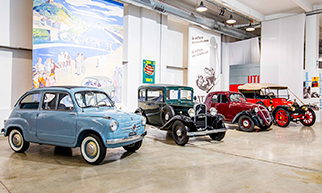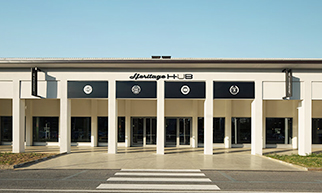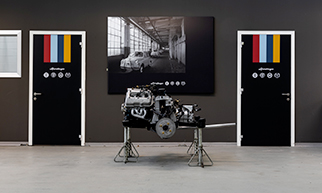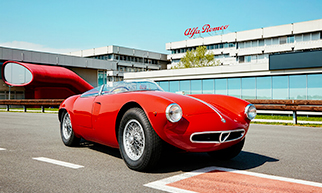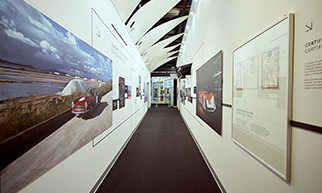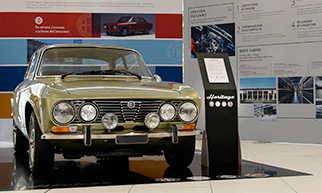Besides 108, the brand’s history is littered with other magic numbers including 1750, 1900 and 33. Not to mention magic initials (6C, TI, GT, GTA, SZ and TZ), adjectives (Super, Veloce and Sprint) and names (Giulietta, Giulia and Spider).
This short list of numbers, adjectives and names evokes the thrill of driving an Alfa Romeo that has distinguished the history of the Milanese marque. Founded in Milan on 24 June 1910, Alfa Romeo remains synonymous with Italian manufacturing excellence, technological innovation and sports racing victories, which have made it a true legend of the motor racing world. A legend with a long pedigree in road car manufacturing: from its latest creation, the Stelvio, to its celebrated first model back in the early days, the ALFA 24 HP.
It was this passion for all things mechanical that led to the creation of A.L.F.A. in 1910. The name of the new car maker was chosen by the group of entrepreneurs who founded it and stands for Anonima Lombarda Fabbrica Automobili ("Anonymous Lombard Automobile Factory"). The Romeo suffix was added in 1918, when engineer Nicola Romeo bought the company.
Throughout its long history, the company has changed hands several times and endured some difficult times, passing under the control of state-owned firm ENI before recovering and becoming part of FIAT in 1986 and now the FCA Group. Among the most important places in the history of Alfa Romeo are the Portello district in Milan, where its first factory was located; Arese, where the company’s official museum is situated; Pomigliano, where the Alfasud was manufactured; and Settimo Milanese, where the exuberant creativity of the brand’s competition arm Autodelta developed the unbeatable Alfa racing cars.
The brand’s philosophy can be summed up in one concept, which was coined for the 1900 and inherited by the Giulietta and Giulia: "the family sedan that wins races". This is the true essence of Alfa Romeo.
It is also impossible to mention all the sports racing successes of Alfa Romeo on roads and circuits around the world. The Alfa stable has always been able to dominate races thanks to its technological supremacy, winning the first Automobile World Championship in 1925 and the first two Formula One World Championships in 1950 and 1951. There have also been victories in numerous national championships.
Many of Alfa Romeo's finest models sit proudly on display at the Alfa Romeo Historical Museum in Arese, a gallery of wonders designed to inspire fans and uninitiated visitors alike. The museum’s priceless heritage consists of authentic working cars that are not solely for show, but which often compete in major re-enactment events in Italy and abroad, where spectators can hear their engines roaring and watch them tearing up the track.
On 24 June 2018, to celebrate the brand’s 108th anniversary, the Alfa Romeo Historical Museum has organised a special day with events and activities dedicated to all enthusiasts and their families.
For the occasion, the C37 Alfa Romeo Sauber F1 Team showcar will be at the "La Macchina del Tempo" to represent the link between the brand's past, present and future. In Arese, in fact, the "Alfetta" 158 with which Nino Farina won the first Formula 1 Championship in 1960, and the 159 in which Juan Manuel Fangio repeated the feat the following year, are permanently exhibited.
For one day, this historically rich place will transform into a stand from which fans can watch the "Pirelli" Formula 1 Grand Prix in France, in collaboration with Sky Sports. To recreate the atmosphere, not only is there the charming C37, but also the original overalls worn by the official drivers of the Alfa Romeo Sauber F1 Team, Charles Leclerc and Marcus Ericsson, in the first races of the 2018 F1 Championship, autographed by the drivers.
